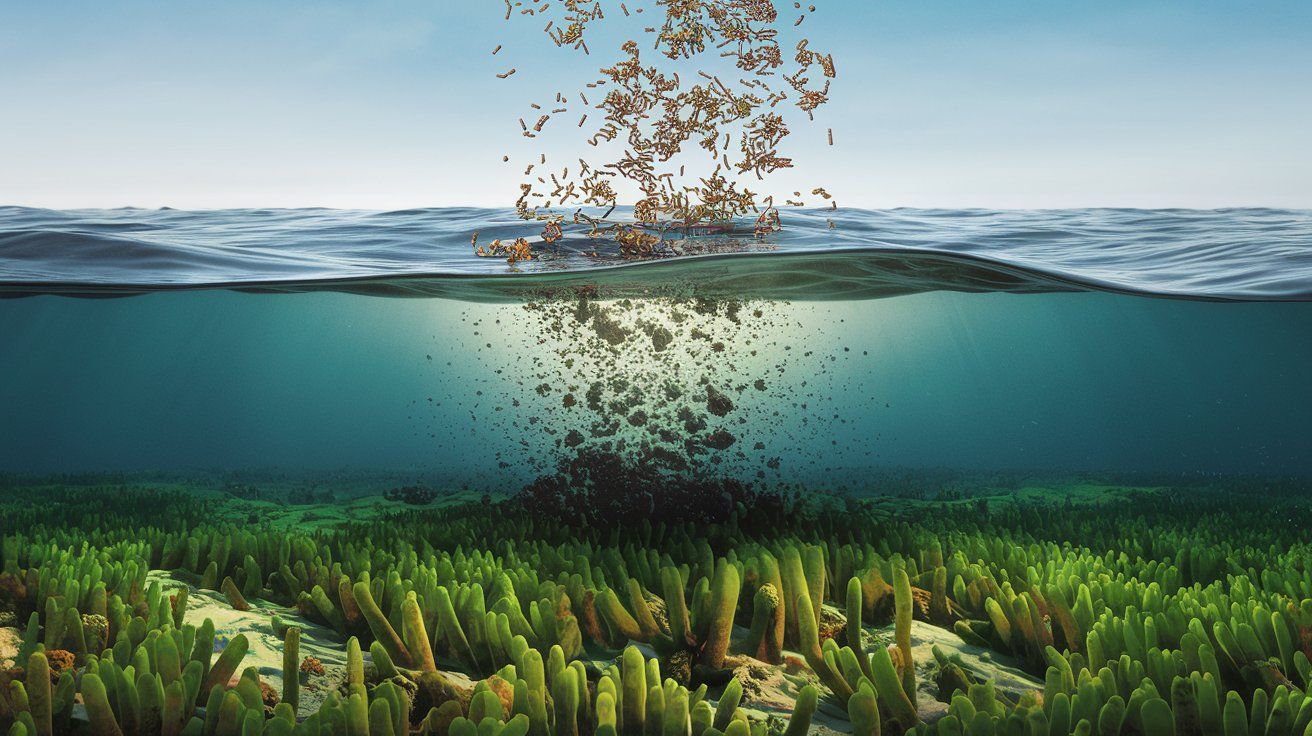Researchers plan to add iron to the ocean to capture CO₂
Published by Cédric,
Article author: Cédric DEPOND
Source: Frontiers in Climate
Other Languages: FR, DE, ES, PT
Article author: Cédric DEPOND
Source: Frontiers in Climate
Other Languages: FR, DE, ES, PT
Follow us on Google News (click on ☆)
Researchers aim to fertilize a part of the Pacific Ocean with iron. Their goal: to stimulate the growth of phytoplankton, which is essential for capturing carbon dioxide. But is it without risks?

The consortium Exploring Ocean Iron Solutions (ExOIS) is at the heart of this initiative. They aim to test iron fertilization over an area of 3,860 square miles (10,000 km²). This method relies on the key role of phytoplankton in photosynthesis, a process that captures CO₂ from the air.
In many ocean regions, iron is scarce, especially in areas known as "ocean deserts," where the low concentration of this element limits phytoplankton proliferation. Yet, phytoplankton plays a fundamental role in capturing atmospheric carbon dioxide through photosynthesis. In response to this shortage, scientists are considering directly adding iron to these waters to stimulate the growth of these microscopic plants.
The idea is that by increasing the phytoplankton population, the absorption of CO₂ will also intensify. When the phytoplankton dies naturally or is consumed by marine organisms, some of the carbon it absorbed could be transported to the ocean's depths. There, this carbon would be trapped in ocean sediments for long periods, thus contributing to reducing CO₂ in the atmosphere.
If successful on a large scale, this process could become a significant tool in the fight against climate change, enhancing the ocean's capacity to store carbon.
However, despite its potential, ocean fertilization remains controversial. Previous trials have yielded mixed results, sometimes with harmful effects on marine life. These experiments have raised concerns about the emergence of low-oxygen zones or toxic algal blooms. The ExOIS project aims to address these concerns. The researchers are committed to complete transparency and rigorous monitoring. Their goal is to precisely quantify the amount of CO₂ that can be sustainably captured using advanced computer models.
Current estimates suggest that iron addition could remove 45 billion tons of carbon by 2100. This is an impressive figure that could play a crucial role in limiting global warming. However, some experts worry that such technological approaches might distract from the essential efforts to reduce CO₂ emissions at the source. The long-term ecological impact of large-scale fertilization experiments also remains a significant unknown.